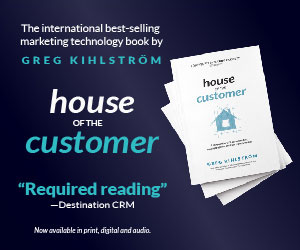This article was based on the interview with [name] of [company] by Greg Kihlström, MarTech consultant for the B2B Agility with Greg Kihlström podcast. Listen to the original episode here:
Happy customer feedback is a valuable asset that organizations can leverage effectively to drive success in their marketing and sales efforts. In a podcast transcript discussing the importance of user evidence, the speaker highlighted the untapped potential of happy customer stories and the need for organizations to collect and utilize this feedback in a structured and strategic manner.
One key insight shared in the podcast is the idea of crowd-sourcing and harnessing the voice of happy customers to create compelling content that can be used for sales and marketing purposes. By capturing feedback from thousands of customers at once through survey instruments, organizations can gather a wealth of positive sentiment and stories that can be transformed into testimonials, case studies, and statistical evidence. This content can then be packaged into visually appealing and branded materials that are perfect for sales decks, social media, emails, and websites.
The podcast also emphasized the importance of asking the right questions when collecting customer feedback. By structuring surveys to elicit specific information about the customer’s experience, organizations can uncover valuable insights that can be used to showcase the benefits of their products or services. Positive stories can highlight the return on investment, key benefits of the product, and moments of delight, while negative feedback can provide valuable insights into areas for improvement.
Leveraging happy customer feedback effectively can help organizations differentiate themselves in a competitive marketplace, build trust with potential buyers, and drive success in their marketing and sales efforts. By prioritizing the development of a diverse collection of customer stories and using them strategically in their sales and marketing efforts, organizations can showcase their capabilities and value proposition, ultimately leading to increased success and growth.
Continuous feedback collection is key in today’s fast-paced business environment. The transcript of the podcast highlights the importance of collecting feedback from customers at opportune moments in their journey, rather than relying solely on annual or quarterly surveys. By implementing a multi-channel approach to feedback collection, organizations can gather a more robust selection of feedback across different types of customers, leading to a deeper understanding of their needs and preferences.
One of the key benefits of continuous feedback collection is the ability to tailor questions to elicit specific responses that align with the organization’s goals. By designing questions that focus on the benefits of a product or service, organizations can gather testimonials and data points that support their narrative and showcase the value they provide to customers. This proactive approach to feedback collection can help organizations stay ahead of the curve and adapt their marketing and sales strategies based on real-time insights from customers.
Furthermore, continuous feedback collection allows organizations to address specific gaps in their customer stories and evidence. By canvassing the sales team and other key stakeholders to understand their needs, organizations can tailor their feedback collection efforts to provide the most relevant and impactful stories for their audience. This targeted approach can help organizations build credibility with potential buyers, overcome objections, and ultimately drive success in their sales and GTM processes.
Continuous feedback collection is key to success in today’s competitive marketplace. By leveraging a diverse collection of customer stories and using them strategically in their marketing and sales efforts, organizations can differentiate themselves, build trust with potential buyers, and drive growth. By staying focused and agile in their feedback collection efforts, organizations can adapt to changing market conditions, meet the needs of their customers, and ultimately achieve their business goals.













